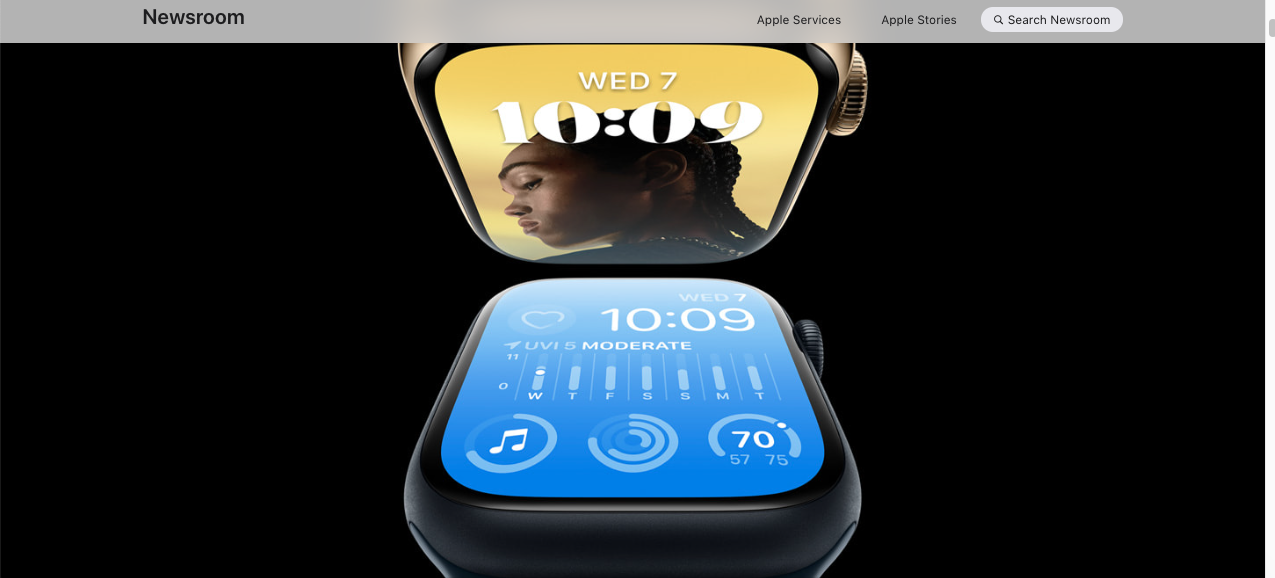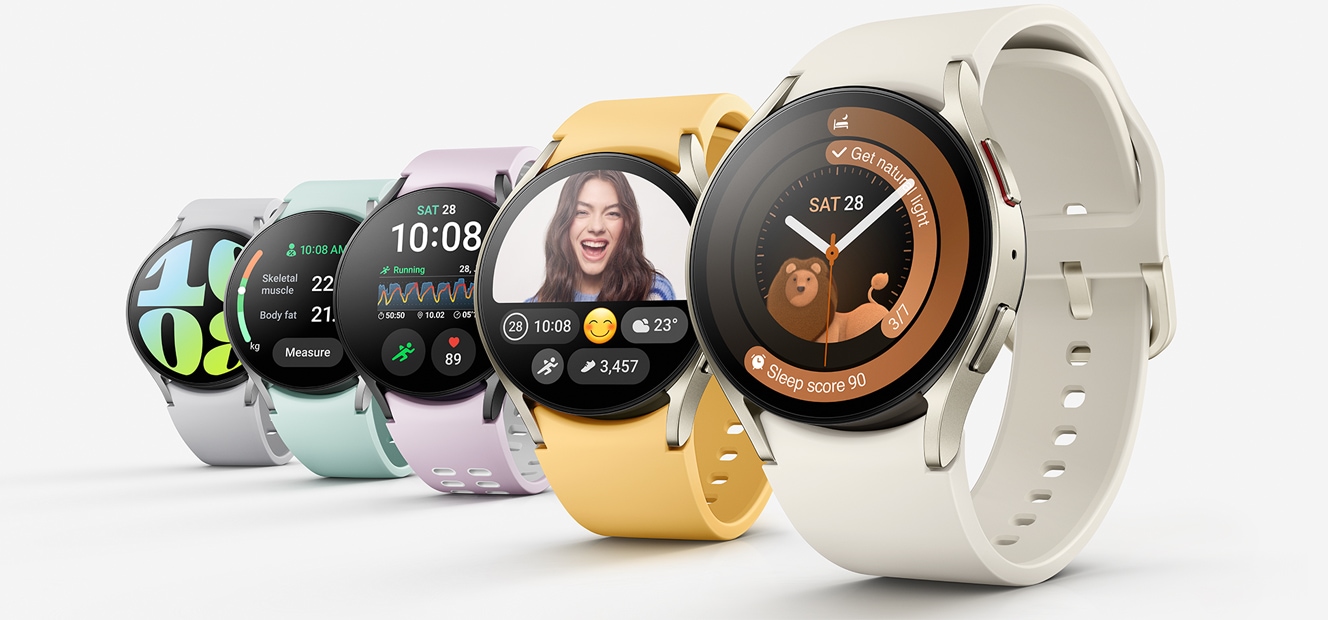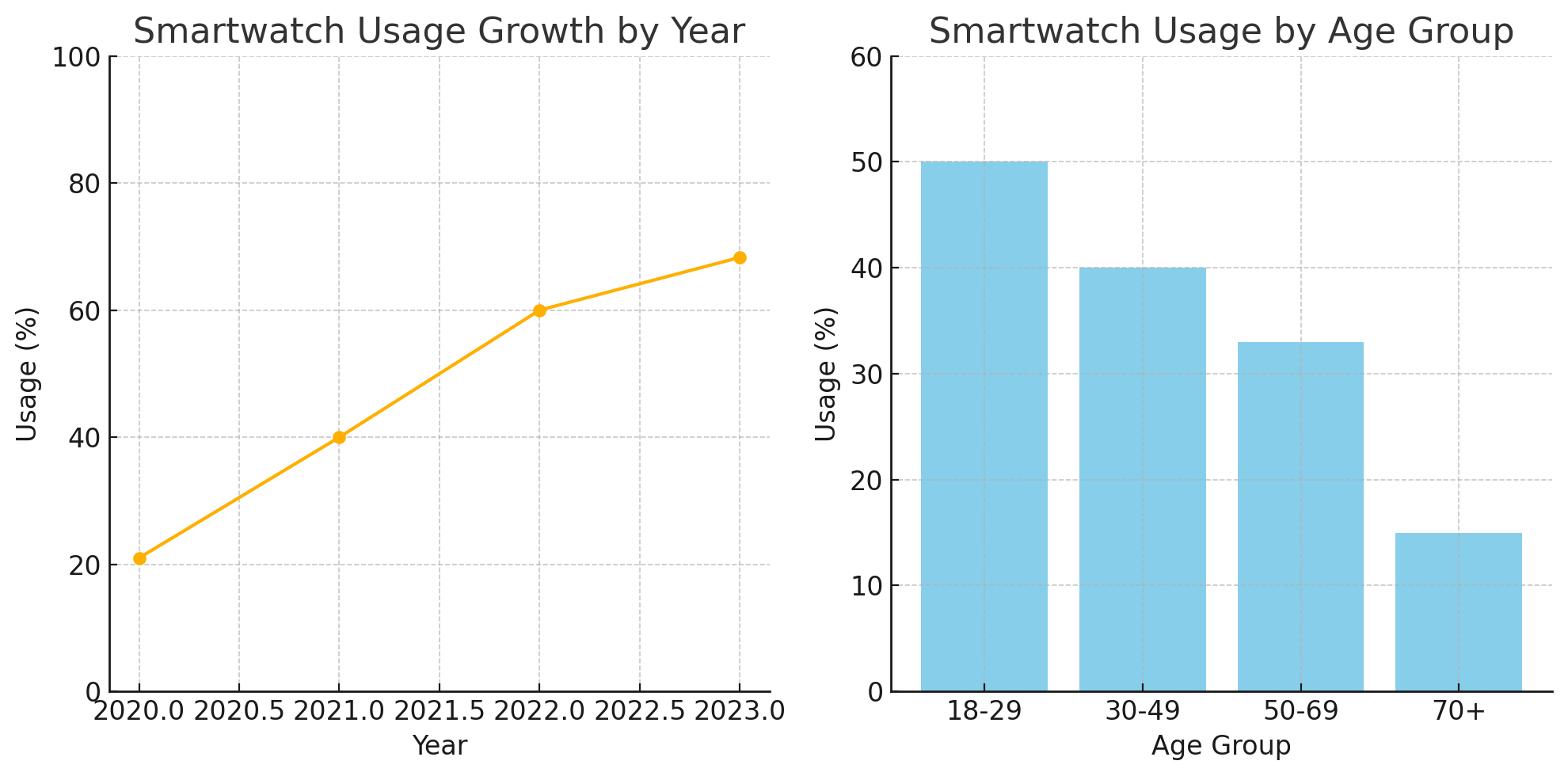When selecting the ideal smartwatch for health and fitness tracking, understanding the features that suit your needs makes decision-making easier. From monitoring heart rate to sleep tracking, these devices support your daily activities while contributing to your overall health. Below is a comprehensive guide detailing the essential features for fitness tracking.
Heart Rate Monitoring: Why Accuracy is Important
Heart rate tracking is particularly important for evaluating your performance during intense exercise. Most modern smartwatches use optical sensors to continuously monitor your heart rate, allowing you to stay within the optimal range during workouts and providing valuable health insights. Advanced models even include an ECG (electrocardiogram) feature, which offers more detailed information about your heart rhythm, helping to detect potential health issues early. If your exercise program includes various intensity levels, choose a smartwatch with highly accurate heart rate tracking.
GPS Tracking: A Must for Outdoor Workouts and Runners
A built-in GPS feature is essential for outdoor activities like running, cycling, or hiking. With GPS, you can accurately track distance, speed, and route information without needing your smartphone. Smartwatches equipped with GPS provide location data, enabling you to assess your performance in different environments. If you are into outdoor sports, choose a model with built-in GPS for more accurate tracking.
Sleep Tracking Features: How They Help Improve Your Sleep Quality
Sleep quality is a crucial part of your health, and most smartwatches analyze different sleep stages to give insights into your sleep routine. This feature tracks light, deep, and REM sleep, guiding you on improvements for better sleep quality. If sleep health is important to you, choose a smartwatch with detailed sleep tracking to help improve your sleep habits.
ECG and Blood Oxygen Sensors: Are These Necessary for You?
ECG sensors help detect irregular heart rhythms, while SpO2 (blood oxygen level) measurements are especially useful at high altitudes or during intense workouts. These sensors are particularly helpful for individuals with respiratory or cardiovascular concerns. If you have specific health needs or perform intense exercise, select a watch with ECG and SpO2 sensors for more comprehensive health tracking.
Battery Life vs. Feature Balance: Finding the Right Balance
Battery life varies significantly depending on features like GPS, heart rate tracking, and screen type. Models with AMOLED screens and continuous tracking may require daily charging, whereas simpler models can last for days. Extended battery life is ideal for users who spend long periods outdoors. Choose a model with a long battery life if your exercise routine involves outdoor activities, as this feature will be more beneficial.
Water Resistance Levels: Which Level Do You Really Need?
Water resistance level is usually expressed in ATM (atmospheres). Most smartwatches are splash-resistant, but for swimmers, models rated at least 5 ATM (suitable for swimming) are recommended. For divers, devices with a rating of 10 ATM or higher are more appropriate. Determine the water resistance level that suits your lifestyle. Swimmers should opt for models with higher durability.
Compatibility with Fitness Apps: Which Smartwatch Integrates Best?
Many smartwatches synchronize with popular fitness apps like Strava, MyFitnessPal, and Google Fit. This integration allows you to consolidate your data across devices, making it easier to analyze your exercise performance on one platform. If you use a specific app, make sure the device you purchase is compatible with that app.
Stress and Recovery Tracking: Understanding HRV and Stress Metrics
Some smartwatches evaluate your stress and recovery using heart rate variability (HRV). This feature helps you assess how well your body recovers post-workout, guiding you on when to rest or re-engage in activity. If you aim to balance physical activity and mental well-being, a smartwatch that tracks stress and recovery metrics could be helpful.
Automatic Workout Detection: Never Miss a Workout
Automatic workout detection ensures that even if you forget to start tracking, your workout data is still recorded. This feature is useful for ensuring that all your activity data is collected, providing a complete view of your daily activity. If you engage in spontaneous and varied exercises, a smartwatch with automatic workout detection ensures all activities are tracked.
Guided Breathing and Mindfulness Features: Are They Really Helpful?
Some smartwatches provide guided breathing exercises and mindfulness reminders for stress management. These features help you relax, contributing to mental balance. If stress management is part of your health goals, consider a smartwatch with mindfulness and breathing exercise features.
All-Day Activity Tracking: Keeps You Moving
All-day activity tracking encourages users to meet movement goals by counting steps, calories burned, and providing movement reminders. This feature can help you increase daily activity even when you’re not exercising. To promote an active lifestyle, an all-day activity tracking feature encourages you to keep moving.
Data Privacy Concerns: How Secure Is Your Health Data?
Data privacy is essential in wearable technology. Many smartwatches encrypt your data, but it’s crucial to review the manufacturer’s privacy policies if storing sensitive health information. To protect your health data, choose reputable brands and check their data privacy policies.
Smartwatch Display Types: Choosing the Best for Outdoor Visibility
Display type is important for visibility, especially outdoors. AMOLED displays offer vibrant colors but may be difficult to read in sunlight. LCD screens generally provide better outdoor readability, and some devices include transflective displays optimized for outdoor use. If you perform outdoor activities, prioritize displays that are easy to view in sunlight.
Buying Considerations
- For fitness-focused users: Prioritize GPS, accurate heart rate tracking, and extended battery life.
- For mental health: Look for devices with stress and recovery tracking and mindfulness features.
- For general health: Comprehensive health metrics (ECG, SpO2) support holistic health monitoring.
- Budget-friendly options: Opt for watches with core health and fitness tracking if advanced features aren’t essential.
Quick Checklist
- Verify smartphone compatibility.
- Balance battery life with desired features.
- Match water resistance to your usage habits.
- Prioritize health and fitness metrics over unnecessary functions.
By considering these features, you can select a smartwatch that fits your lifestyle and health goals. With the right choice, your smartwatch can be a valuable companion in your health and fitness journey.
What are the leading brands and models of smartwatches for health and fitness tracking?
Prominent smartwatch brands and models for health and fitness tracking are as follows:
Apple Watch Series 8
Apple’s latest model, the Series 8, is known for its advanced health and fitness features. It offers heart rate monitoring, ECG, blood oxygen level measurement, and sleep tracking. Additionally, its extensive app ecosystem enhances the user experience.

Samsung Galaxy Watch 6
Samsung’s Galaxy Watch 6 model stands out with its AMOLED display, powerful processor, and advanced sensors. It provides ECG, blood oxygen level measurement, sleep tracking, and body composition analysis, offering comprehensive health tracking.

Huawei Watch GT 4
Huawei’s Watch GT 4 model is known for its long battery life and sleek design. It meets health and fitness needs with features like heart rate monitoring, sleep tracking, SpO2 measurement, and various sport modes.

Garmin Forerunner 245
Designed especially for runners, this model offers GPS tracking, VO2 max measurement, and advanced training features. It also includes health features like heart rate monitoring and sleep tracking.

Fitbit Charge 5
This model by Fitbit provides features like ECG, SpO2, sleep tracking, and stress management at an affordable price. Its lightweight and ergonomic design makes it ideal for everyday use.

These brands and models offer a variety of features to meet users’ health and fitness tracking needs. When choosing, it’s important to consider your personal requirements and usage habits.
What are the usage rates of smartwatches worldwide by year and age?

Here is a visual representation of smartwatch usage trends:
- Left Graph: Shows the growth in smartwatch usage by year, illustrating a steady increase from 2020 to 2023.
- Right Graph: Displays usage distribution across age groups, highlighting higher adoption among younger demographics and decreasing usage with age.
These charts provide a quick view of how smartwatch adoption has grown over recent years and how it varies by age group
Global smartwatch adoption has grown significantly over recent years, with usage rates varying across age groups. In 2020, approximately 21% of U.S. adults used a smartwatch or fitness tracker regularly. By 2021, 40% of U.S. individuals aged 35 to 54 owned wearable devices, including smartwatches. In 2022, there were an estimated 443 million active smartwatches worldwide, and in 2023, global smartwatch shipments reached 68.3 million units. Usage patterns also vary by age group: the 18-29 age group has the highest adoption rate, using smartwatches mainly for fitness tracking and notifications; those aged 30-49 follow with moderate use, often for health monitoring; around 33% of people aged 50-69 use smartwatches, mostly for health features, while usage drops to about 15% among individuals aged 70 and older. This growth in adoption suggests that smartwatches are increasingly becoming integral to daily life, especially among younger demographics, as technology becomes more accessible and user-friendly.



